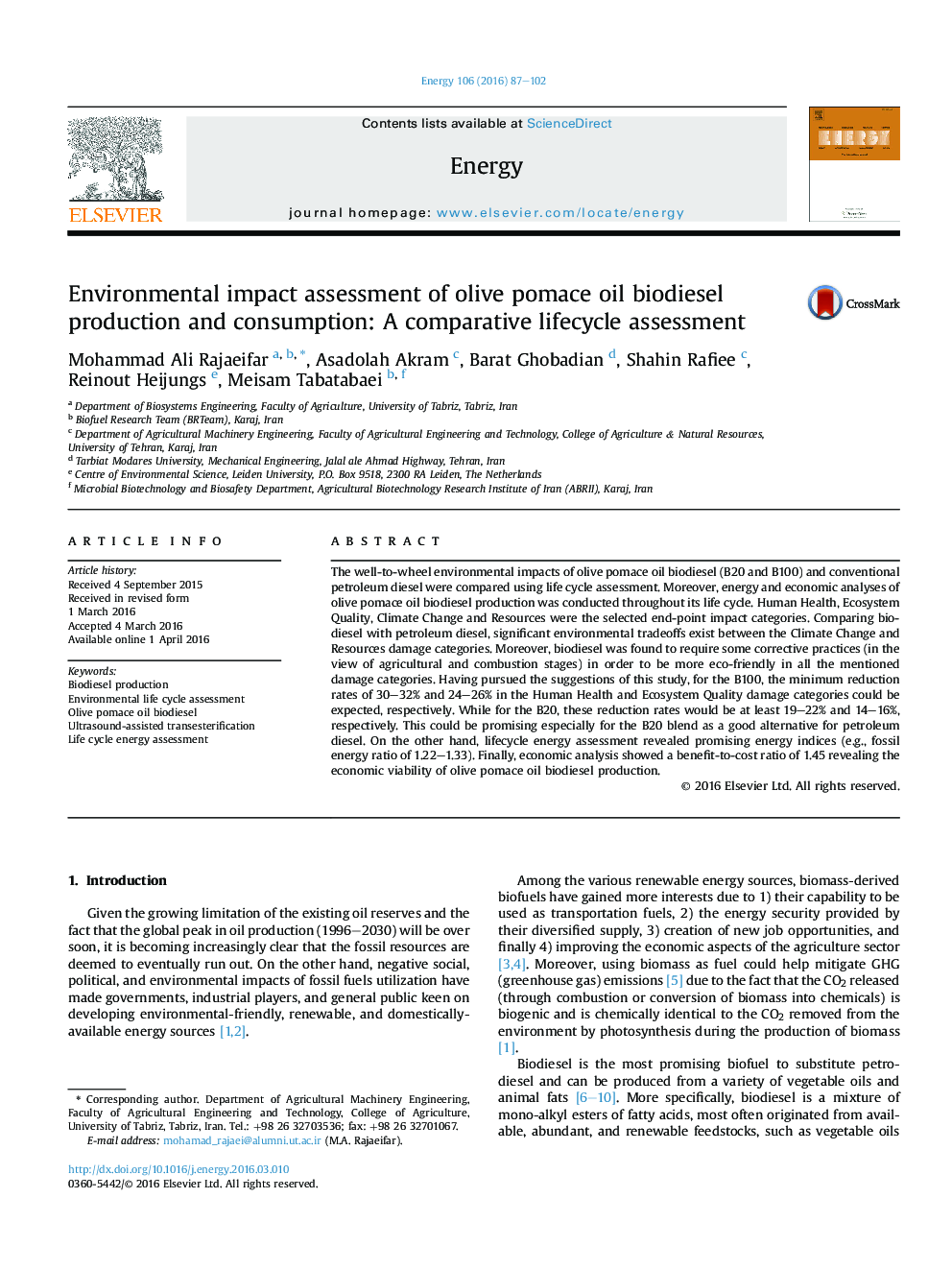| کد مقاله | کد نشریه | سال انتشار | مقاله انگلیسی | نسخه تمام متن |
|---|---|---|---|---|
| 1730940 | 1521442 | 2016 | 16 صفحه PDF | دانلود رایگان |
• Comparative lifecycle assessment of OPO biodiesel and petroleum diesel was performed.
• The B100 blend was the worst blend in the Human Health and Ecosystem Quality damage categories.
• Diesel No. 2 was the worst blend in the Climate Change and Resources damage categories.
• Proper farm management practices with an aim of optimizing fertilizers and manures consumption is suggested.
• Direct aqueous urea solution injection at combustion stage as well as adding EPS to biodiesel could be suggested.
The well-to-wheel environmental impacts of olive pomace oil biodiesel (B20 and B100) and conventional petroleum diesel were compared using life cycle assessment. Moreover, energy and economic analyses of olive pomace oil biodiesel production was conducted throughout its life cycle. Human Health, Ecosystem Quality, Climate Change and Resources were the selected end-point impact categories. Comparing biodiesel with petroleum diesel, significant environmental tradeoffs exist between the Climate Change and Resources damage categories. Moreover, biodiesel was found to require some corrective practices (in the view of agricultural and combustion stages) in order to be more eco-friendly in all the mentioned damage categories. Having pursued the suggestions of this study, for the B100, the minimum reduction rates of 30–32% and 24–26% in the Human Health and Ecosystem Quality damage categories could be expected, respectively. While for the B20, these reduction rates would be at least 19–22% and 14–16%, respectively. This could be promising especially for the B20 blend as a good alternative for petroleum diesel. On the other hand, lifecycle energy assessment revealed promising energy indices (e.g., fossil energy ratio of 1.22–1.33). Finally, economic analysis showed a benefit-to-cost ratio of 1.45 revealing the economic viability of olive pomace oil biodiesel production.
Journal: Energy - Volume 106, 1 July 2016, Pages 87–102
